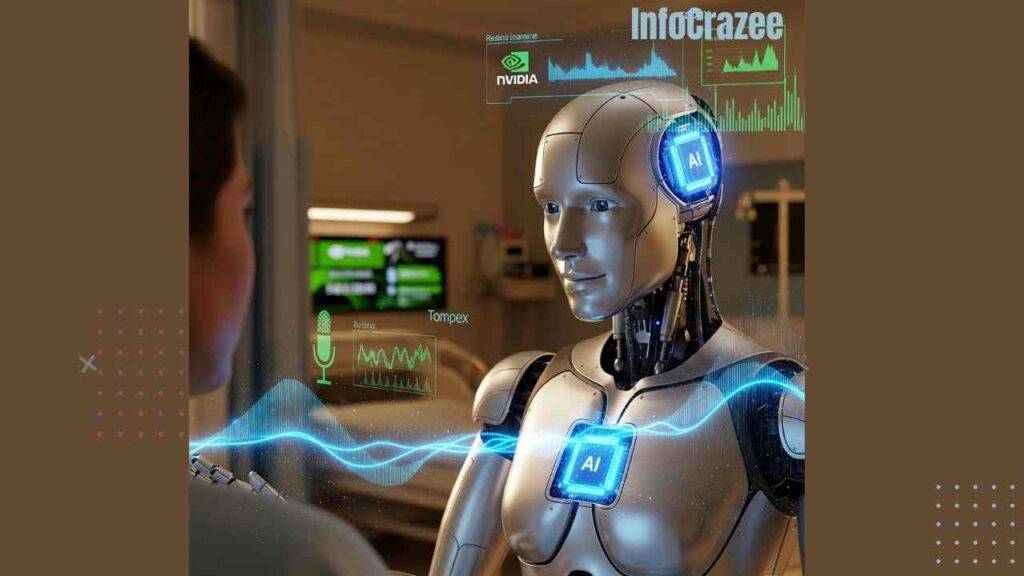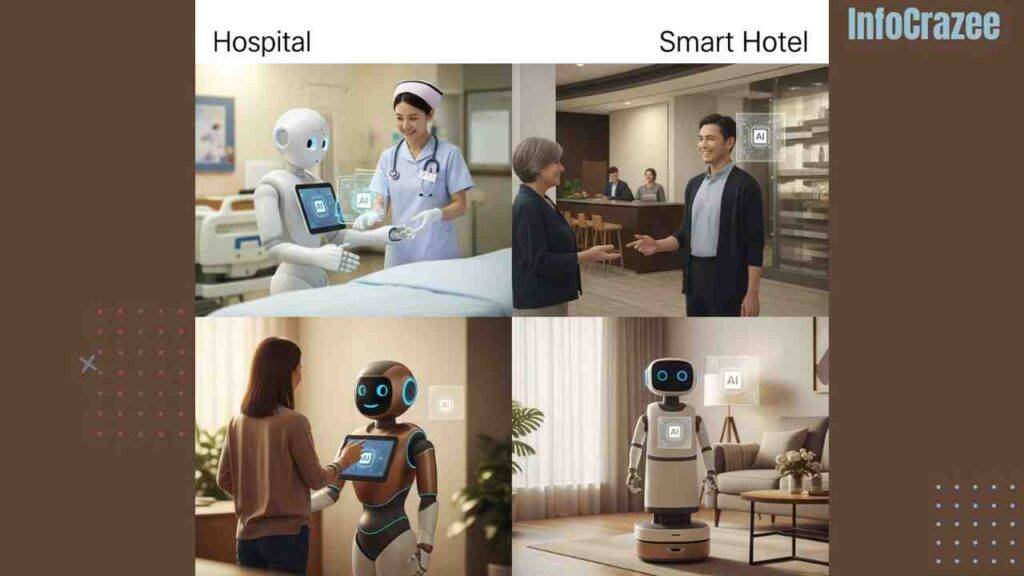Humanoid Robots Just Got Smarter: New AI Chip Boosts Their Thinking Speed
Surge in Humanoid Robots Across Industries
Humanoid robots are no longer confined to science fiction—they’re stepping into the real world, transforming industries with their human-like capabilities. From hospitals to hotels, these robots are designed to mimic human movements, expressions, and interactions, powered by advanced artificial intelligence (AI). The global humanoid robot market, valued at $2.03 billion in 2024, is projected to soar to $13 billion by 2029, driven by advancements in AI and machine learning (ML) [MarketsandMarkets,]. As labor shortages and aging populations challenge sectors like healthcare and hospitality, humanoid robots are emerging as a solution, blending cutting-edge technology with practical applications. A new breakthrough in AI chip technology is set to make these robots even smarter, faster, and more adaptable, promising a future where they work seamlessly alongside us.
New Update: AI Chip for Real-Time Learning and Decision-Making
A groundbreaking development in AI chip technology is accelerating the capabilities of humanoid robots. NVIDIA, a leader in AI innovation, has introduced specialized microservices and chips optimized for real-time learning and decision-making, announced in March 2024 []. These chips, designed for high-performance computing, enable robots to process complex data from sensors, cameras, and microphones instantly, allowing for dynamic responses in unpredictable environments. Unlike traditional chips, these new processors leverage accelerated computing and advanced algorithms to train robots faster—sometimes slashing months off development time by using synthetic data []. For example, NVIDIA’s platforms support robots like the GR-2 by Fourier Intelligence, which can learn tasks like navigating cluttered spaces or assisting patients in real time []. This leap in processing power means robots can make split-second decisions, from avoiding obstacles in a hospital hallway to responding to a patient’s emotional cues, making them more reliable and versatile.

Use Cases: Healthcare, Hospitality, and Elder Care
Healthcare
In healthcare, humanoid robots powered by these AI chips are revolutionizing patient care. Robots like Moxi by Diligent Robotics, equipped with AI for navigation and task management, are already streamlining hospital logistics by delivering supplies and medications, freeing up staff for critical patient interactions [,]. At Broca Hospital in Paris, the ARI robot, tested in 2024, interacts with elderly patients using advanced speech recognition and adaptive communication, guiding them through appointments and reducing staff workload []. These robots use real-time decision-making to navigate busy hospital corridors and respond to patient needs, with AI chips enabling precise movements and hazard detection.
Hospitality
In the hospitality sector, robots like Promobot are transforming guest experiences. Equipped with facial recognition and chat functions, Promobot can check in hotel guests, issue keycards, and even measure health indicators like blood oxygen levels, all powered by AI chips that process data instantly []. These robots adapt to guest preferences in real time, offering personalized service that rivals human concierges. For example, Kime, a humanoid robot, serves drinks at kiosks in Spain, using AI to handle orders efficiently and enhance customer satisfaction.
Elder Care
Elder care is perhaps the most promising application. With the global population of adults aged 65 and older expected to double by 2050, robots like Fourier’s GR-2 and Hanson Robotics’ Grace are stepping in to address caregiver shortages [,]. Grace, designed for seniors, uses AI chips to power its expressive face and thermal cameras to monitor vitals, offering companionship and basic health checks. In trials, Grace has led talk therapy sessions, reducing loneliness in care facilities []. Similarly, Pepper by SoftBank Robotics engages dementia patients with conversation and exercise prompts, adapting to their emotional states in real time [,]. These robots, enhanced by new AI chips, can learn from interactions, making them more effective over time.
Future Outlook: Will Robots Work Beside Us Soon?
The advancements in AI chip technology signal a future where humanoid robots could become as common as smartphones, especially in healthcare and hospitality. NVIDIA’s Rev Lebaredian predicts that robots will integrate seamlessly into human environments, like hospitals and homes, without requiring costly redesigns [,]. Companies like Tesla, with its Optimus robot, and Google-backed Apptronik, with its Apollo robot, are racing to deploy general-purpose humanoids capable of tasks from surgery assistance to household chores [,]. However, challenges remain: robots still struggle with unpredictable home environments, and ethical concerns about privacy and autonomy persist [,]. Regulatory frameworks are evolving, with the EU’s Artificial Intelligence Act (effective August 2024) setting standards for safe AI use []. If these hurdles are overcome, experts estimate that by 2030, humanoid robots could be a staple in hospitals, hotels, and care homes, working alongside humans to enhance efficiency and quality of life.

Conclusion: The Future of Robots Is Not Sci-Fi Anymore
The fusion of advanced AI chips with humanoid robots is turning futuristic dreams into reality. These robots, now capable of real-time learning and decision-making, are poised to transform healthcare, hospitality, and elder care. From assisting surgeons to serving hotel guests and comforting seniors, their potential is vast—but so are the challenges. As technology advances and ethical concerns are addressed, humanoid robots are set to become trusted partners in our daily lives. The future isn’t sci-fi; it’s here, and it’s powered by AI that thinks faster than ever before.






